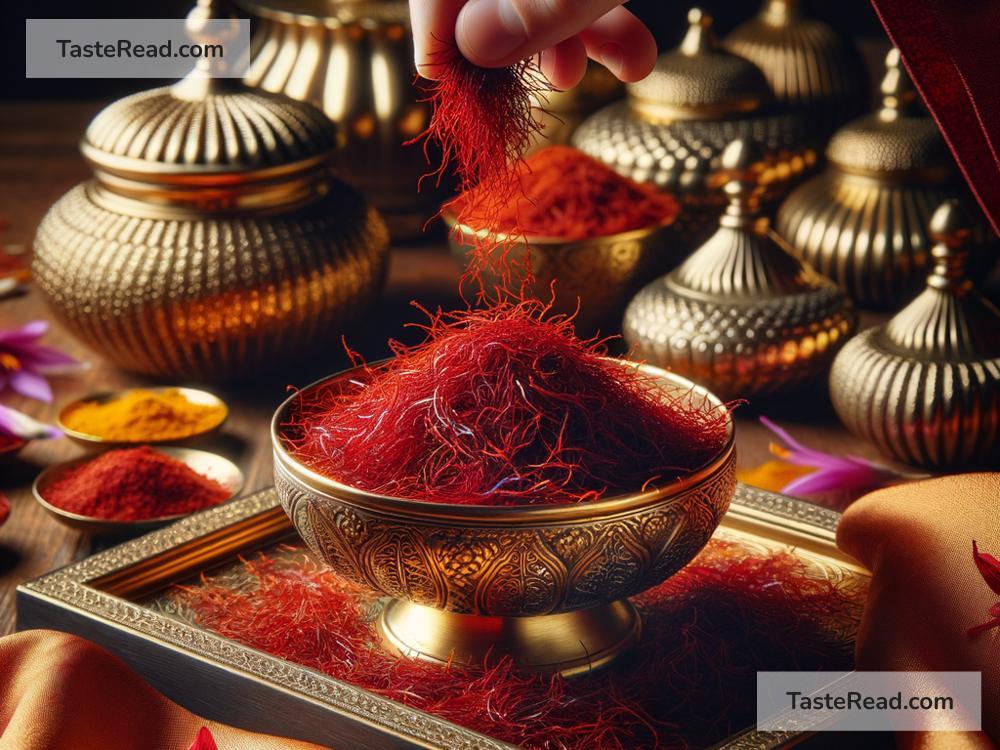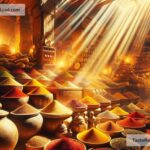How Saffron Became the Spice of Royalty
Saffron is one of the most expensive spices in the world, but its importance goes far beyond the price tag. For thousands of years, saffron has been considered a symbol of luxury, wealth, and power. Kings, emperors, and royalty from different cultures have treasured this golden spice, using it to show off their status and celebrate special occasions. But how did saffron earn its reputation as the spice of royalty? Let’s explore its fascinating history and unique qualities.
What Is Saffron?
Saffron comes from the flower of the Crocus sativus plant. It is made from the tiny red stigmas, the thread-like parts in the center of the flower. Each flower produces only three stigmas, and harvesting saffron is a very delicate process that requires skilled hands. Workers must carefully hand-pick the stigmas, and it takes around 75,000 flowers to produce just one pound of saffron.
The process of growing, harvesting, and processing saffron is labor-intensive. This is one of the main reasons why saffron is so costly. But its unique flavor, vibrant color, and potential health benefits make it highly sought after.
Saffron’s Early History
Saffron’s story begins thousands of years ago in ancient civilizations. While the exact origin of saffron is unclear, historians believe it first appeared in Southwest Asia, possibly in Iran or Greece. Ancient texts and artwork show saffron being used for cooking, medicine, and religious rituals as early as 3,000 years ago.
From the start, saffron was associated with wealth and prestige. Because it took so much effort to produce, only the rich and powerful could afford to use it. Ancient Egyptians, for example, used saffron in cosmetics and fragrances. Queen Cleopatra is said to have bathed in saffron-infused milk to enhance her beauty and seduction skills.
A Spice Fit for Kings
As trade routes expanded, saffron traveled across the ancient world. The spice became especially popular in Persia (modern-day Iran), India, and the Mediterranean. Persian kings used saffron to season their royal feasts, dye fabrics for their robes, and even make perfumes.
In India, saffron became a sacred spice used in both royal ceremonies and religious rituals. Kings and queens wore saffron-colored clothing to symbolize divine power and purity. Hindu texts often mention saffron as a symbol of wealth and protection. Over time, saffron also became a key ingredient in luxurious Mughal dishes like biryani and korma, earning its place on royal dining tables.
In the Roman Empire, saffron was valued for its medicinal properties and unique fragrance. Roman emperors sprinkled saffron on their beds and in their baths, believing it could improve their mood and health. It was also burned as incense during celebrations and used as a dye for royal garments.
Medieval Europe and Beyond
Saffron’s popularity grew even more during the Middle Ages. It spread to Europe through trade and became a prized ingredient in both food and medicine. Royals used saffron not just for its taste but also for its ability to give dishes an eye-catching golden color.
In medieval Europe, saffron was thought to have healing powers. Nobles and kings would use saffron to treat illnesses, reduce stress, and improve energy levels. Because saffron was rare and expensive, it became known as a spice for the elite. In England, King Henry VIII banned common people from wearing saffron-colored clothing to ensure it remained exclusive to royalty.
By the 16th and 17th centuries, saffron also became a luxury export tied to global trade. Farmers in Europe and Asia grew saffron specifically for royal courts and wealthy merchants. Saffron became part of expensive recipes, perfumes, and even medicines that only the wealthy could afford.
Saffron Today
Even in modern times, saffron’s royal reputation has not faded. It is still one of the most prized spices in the world, used in gourmet recipes like paella, risotto, and Persian stews. Cultures that historically valued saffron continue to use it for celebrations, religious rituals, and traditional dishes.
Thanks to its high cost, saffron is sometimes called “red gold.” A small pinch can add incredible flavor, rich color, and a touch of elegance to any dish. Around the world, saffron is still connected to luxury and special occasions—proof that its royal legacy lives on.
What Makes Saffron Special?
There are many reasons why saffron became the spice of royalty. Its rarity, intense labor requirements, and unique qualities set it apart from other spices. Its vibrant golden color symbolizes wealth and happiness, making it perfect for celebrations. Its distinct taste—a mix of earthy, floral, and slightly sweet flavors—adds a touch of magic to food.
Beyond its culinary uses, saffron has also been celebrated for its medicinal properties. Ancient cultures believed it could heal the body and mind, and modern studies suggest it may help with mood, digestion, and overall health.
Conclusion
Saffron’s journey from ancient fields to royal courts is a testament to its unmatched value. Through centuries and across continents, this golden spice has remained a symbol of luxury, power, and refinement. Whether you see it in a rich biryani, a glowing saffron tea, or the golden robes of ancient kings, saffron’s beauty and history are truly royal. For those lucky enough to taste or use saffron, it’s easy to understand why it continues to be the spice of royalty.


